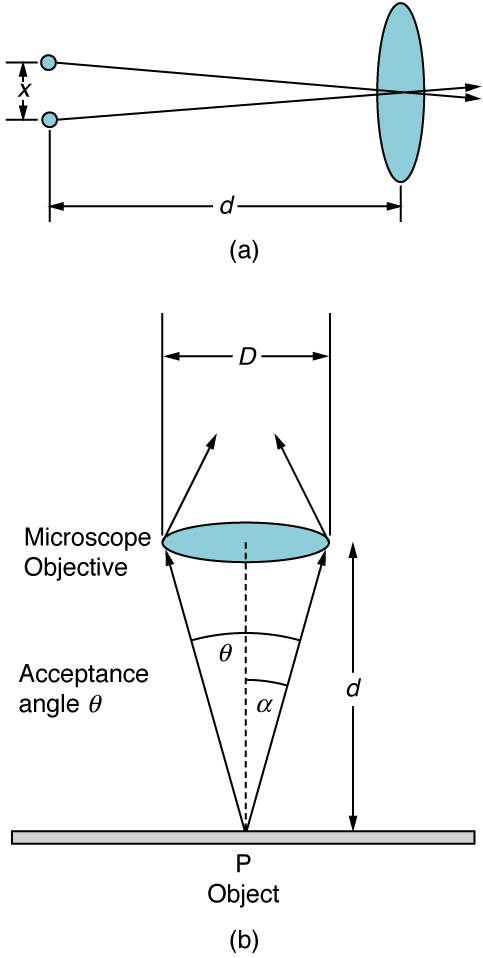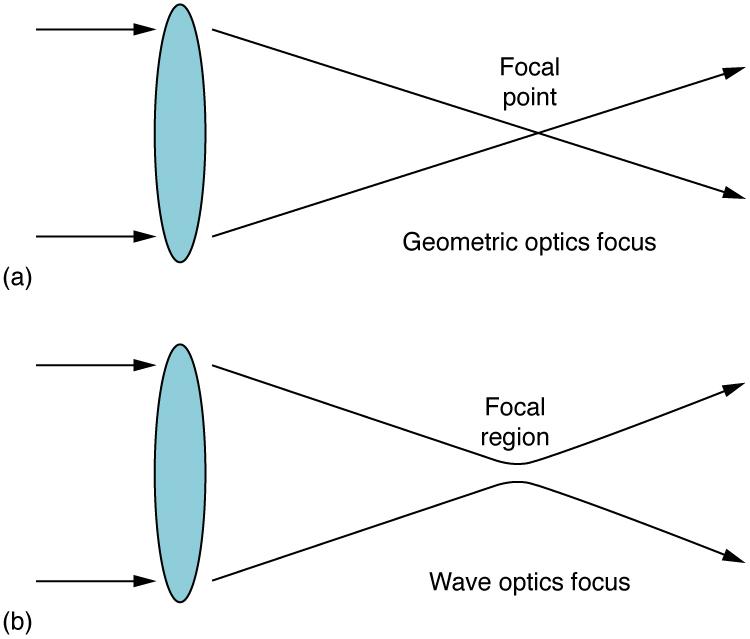| << Chapter < Page | Chapter >> Page > |
where is the distance between the specimen and the objective lens, and we have used the small angle approximation (i.e., we have assumed that is much smaller than ), so that .
Therefore, the resolving power is
Another way to look at this is by re-examining the concept of Numerical Aperture ( ) discussed in Microscopes . There, is a measure of the maximum acceptance angle at which the fiber will take light and still contain it within the fiber. [link] (b) shows a lens and an object at point P. The here is a measure of the ability of the lens to gather light and resolve fine detail. The angle subtended by the lens at its focus is defined to be . From the figure and again using the small angle approximation, we can write
The for a lens is , where is the index of refraction of the medium between the objective lens and the object at point P.
From this definition for , we can see that
In a microscope, is important because it relates to the resolving power of a lens. A lens with a large will be able to resolve finer details. Lenses with larger will also be able to collect more light and so give a brighter image. Another way to describe this situation is that the larger the , the larger the cone of light that can be brought into the lens, and so more of the diffraction modes will be collected. Thus the microscope has more information to form a clear image, and so its resolving power will be higher.

One of the consequences of diffraction is that the focal point of a beam has a finite width and intensity distribution. Consider focusing when only considering geometric optics, shown in [link] (a). The focal point is infinitely small with a huge intensity and the capacity to incinerate most samples irrespective of the of the objective lens. For wave optics, due to diffraction, the focal point spreads to become a focal spot (see [link] (b)) with the size of the spot decreasing with increasing . Consequently, the intensity in the focal spot increases with increasing . The higher the , the greater the chances of photodegrading the specimen. However, the spot never becomes a true point.


Notification Switch
Would you like to follow the 'College physics' conversation and receive update notifications?